Advantages of IT Outsourcing for Enterprise Growth

As technology continues to advance at a rapid pace, businesses face relentless pressure to innovate and maintain a competitive edge. However, not every company has the resources or in-house expertise to tackle every IT challenge on its own. This is where IT outsourcing emerges as the leading solution.
So, what is IT outsourcing, and what are the advantages of IT outsourcing? Can it truly help your business save costs, or does it deliver even greater value you can’t afford to overlook? Let’s explore the outstanding benefits of IT outsourcing with Newwave Solutions—the very reasons why more and more companies around the world are choosing this service.
What is IT Outsourcing?
IT outsourcing refers to hiring an external partner that specializes in IT services rather than building and managing an in-house IT team. In other words, you delegate some tasks to an outsourcing platoon and free yourself for more important business issues, while supervising the working process.
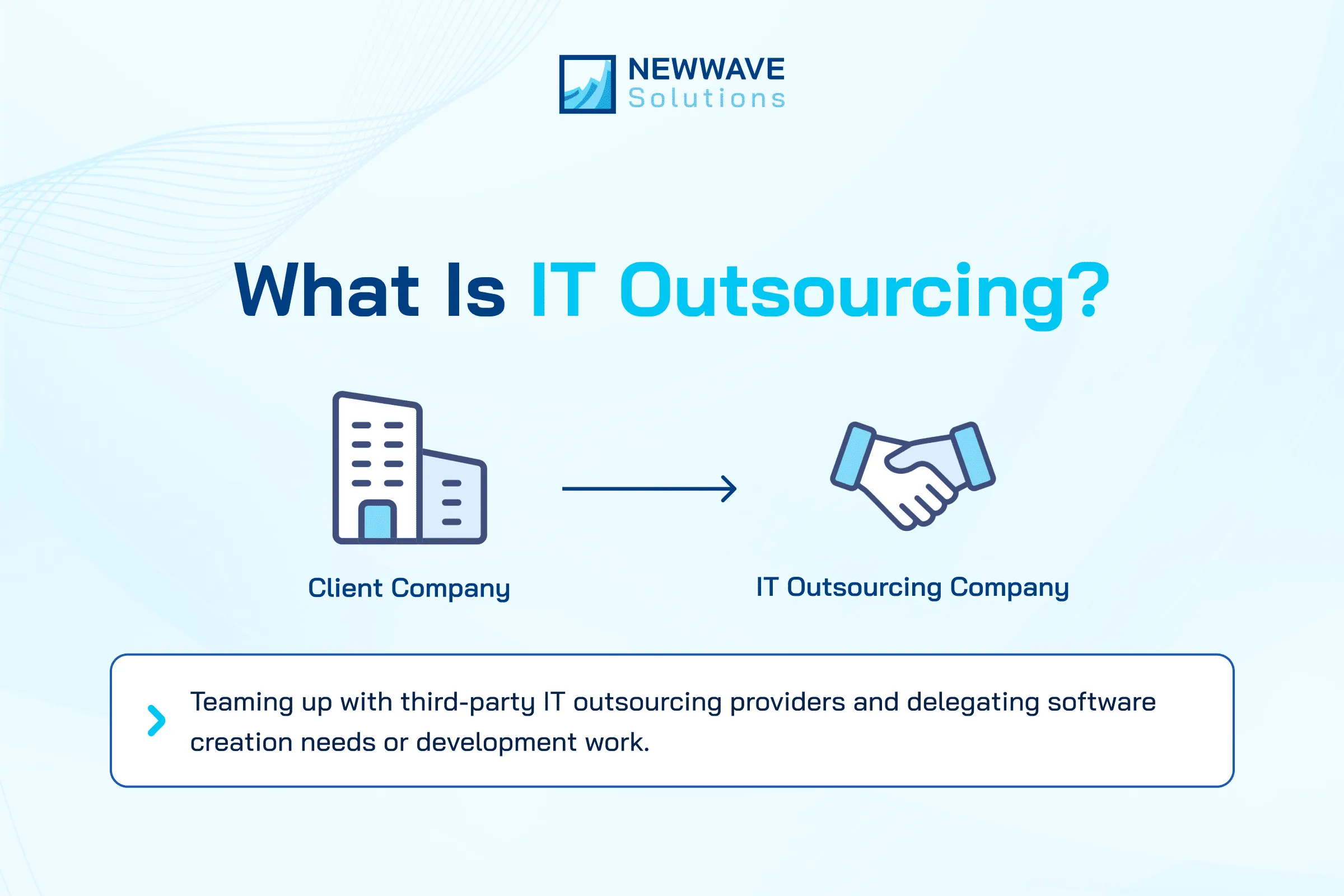
This is a good approach for any association that looks for cost savings and requires access to technical chops. Businesses can optimize resources effectively by exploring what IT services can be outsourced.
>>>Related post: What is IT outsourcing? How It Transforms Your IT Function
Key Advantages of IT Outsourcing
When it comes to the advantages of IT outsourcing, cost savings are just the beginning. There are many other valuable benefits waiting for businesses to discover. Let’s take a closer look at the most outstanding advantages that IT outsourcing brings to organizations.
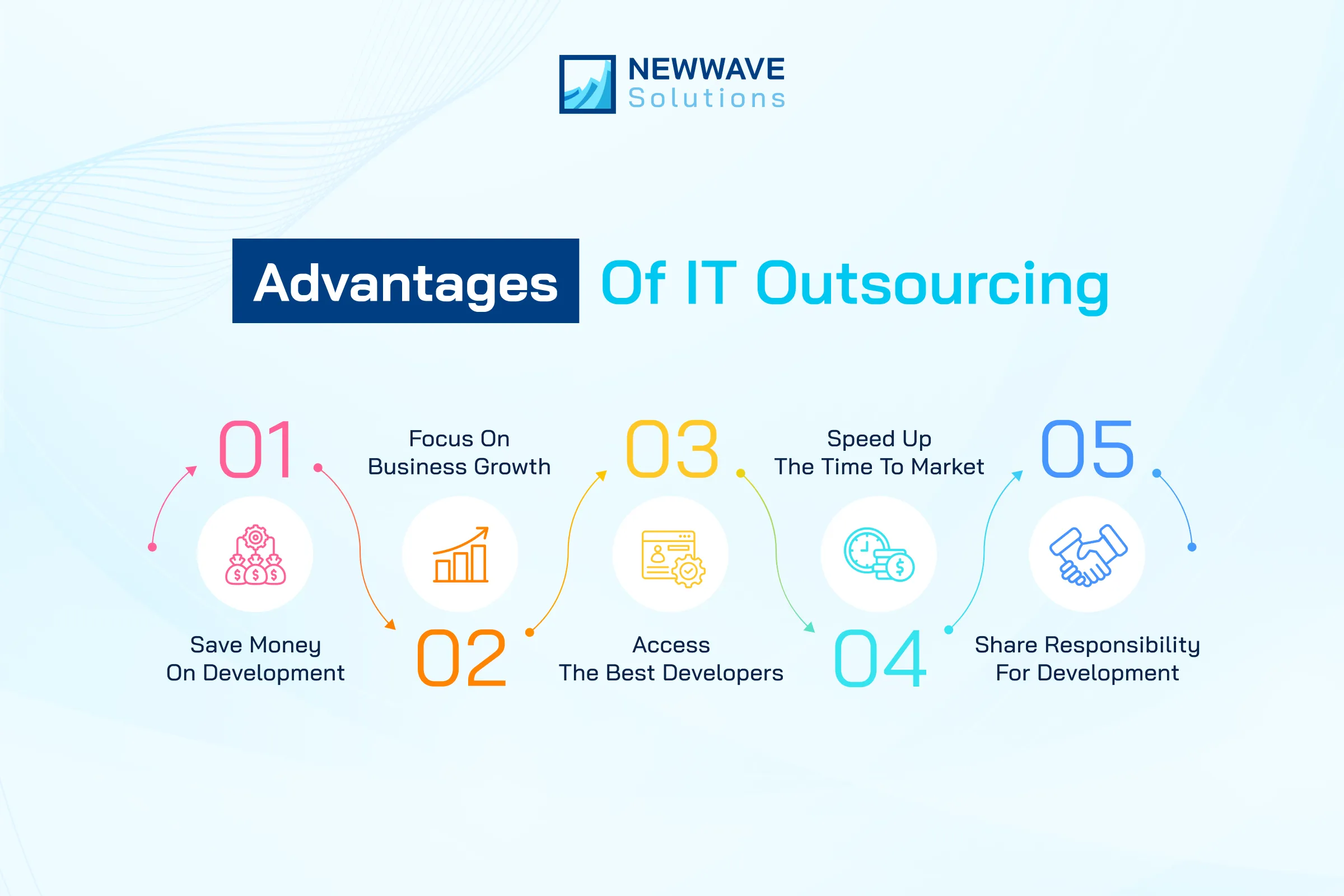
1. Budgeting/ Savings and Expenditure Management
The primary reason for IT outsourcing in any company is cost reduction: statistics show that 59% of companies do so for cost-saving purposes. Here’s why:
- Labor and production cost differences: Countries like Vietnam, India, and the Philippines offer skilled IT talent at lower rates, making outsourcing even more affordable.
- Reduced operational expenses: Companies save on infrastructure, recruitment, employee benefits, and training.
- Time and effort savings: Managing an in-house IT team requires considerable resources; outsourcing frees up valuable time to focus on strategic, value-driven activities.
These cost savings can be reinvested into product development, marketing, or expanding services, creating a virtuous cycle of growth.
2. Sharper Focus on What You Do Best
Outsourcing the work of IT permits organizations to pay more attention to their core business. According to UpCity, outstanding problem-solving ability is the most wanted skill in an outsourcing partner, for all reasons:
- Relief from IT complexities: Handling rapid technology changes, different kinds of cyber-attacks, or building software may be consuming for an in-house team.
- Better business orientation: Offloading IT responsibilities can also enable organizations to focus on innovation, customer experience enhancement, and performing marketing activities.
Productivity expert David Allen once said, “You can do anything, but not everything.” Outsourcing IT allows enterprises to achieve just this type of balance.
3. Access to Skilled Resources and Expertise
The global shortage of IT talent is fast becoming worse. According to IDC, by 2026, skill shortages will affect 90% of all organizations around the world, translating into $5.5 trillion in losses. Outsourcing provides a solution:
- Global talent access: Outsourcing opens up organizations to accessing skilled professionals, even in niche areas where finding them could be a challenge.
- Specialized expertise in everything from AI to cybersecurity to software development is something in which your outsourcing partners are very knowledgeable and experienced.
This scalability ensures that IT resources are always set to meet the current business demands.
4. Increased Efficiency and Productivity
Efficiency stands as the second most-wanted outcome of IT outsourcing, while productivity increase has been attained by 37% of small businesses. This is driven by:
- Optimized workflows: Outsourcing allows internal teams to focus on strategic goals while external partners manage IT operations.
- Improved quality: Outsourced IT companies guarantee high system performance, improved security, and quick time-to-market.
- Time-to-market: Each business can market products or services in the shortest time and thus also gain a competitive advantage.
By undertaking outsourcing, companies can have maximum returns on IT investments and, in the process, ensure viable growth.
5. Scalability and Flexibility
As the growth of a business happens, or with fluctuating market demands, scaling of IT resources quickly becomes more and more indispensable. Flexibility, which comes with outsourcing, is pretty hard to achieve with an internal team.
It also helps in easily scaling up and scaling down your IT team—be it expansion for introducing any new product or scaling down during the quieter period, allowing modification in team size without delays and complications.
- Adapt to changes more quickly: if your enterprise is to adapt to new technologies like AI, then you will not have problems recruiting professionals to make it happen.
- Big picture: By outsourcing, resources are freed up to deal with changing business needs, unconcerned about finding and managing additional in-house staff.
6. Support of Risk Management and Compliance
As industries face increasingly complex regulatory environments and security challenges, outsourcing provides the expertise necessary to remain in compliance and keep their operations safe.
- Expert risk management: The partner-outsourcing companies are specialized in managing those risks, be it cybersecurity, data privacy, or regulatory compliance.
- Stay Compliant: Many outsourced IT companies help businesses navigate through the regulatory necessities to ensure all systems remain safe and compliant with the law.
- Regular audits and reporting: Let external providers take care of risk assessments, audits, and regulatory filings to free up your team’s time and avoid potentially costly mistakes.
It allows firms to hedge against such critical missions and nail the issues of growth.
7. Entry to Creative Technical Solutions
One of the most significant advantages of outsourcing lies in the ability to harness state-of-the-art technology without the burden of substantial infrastructure investments.
- Stay on the cutting edge: Outsourcing providers often invest heavily in research and development, giving you access to the latest tools and technologies without the associated costs.
- Broader market insight: Working with experienced vendors means tapping into a wealth of industry knowledge, which can lead to more innovative solutions for your business.
- Competitive advantage: Access to the best technology ensures that your business remains innovative and competitive in the market.
Outsourcing IT isn’t just about saving money—it’s about empowering your business. From accessing top talent to staying ahead in a competitive market, the benefits of IT outsourcing cannot be overstated. Once you find a fit with the right outsourcing provider, you’ll be able to unlock the above advantages and set your business up for long-term success.
>>>Read more: Top 10 Software Outsourcing Vietnam Companies
The Disadvantages of IT Outsourcing
While IT outsourcing has many advantages, it also comes with a few challenges that businesses should consider before deciding to outsource. Understanding these disadvantages of outsourcing helps in making informed choices and preparing for potential hurdles.
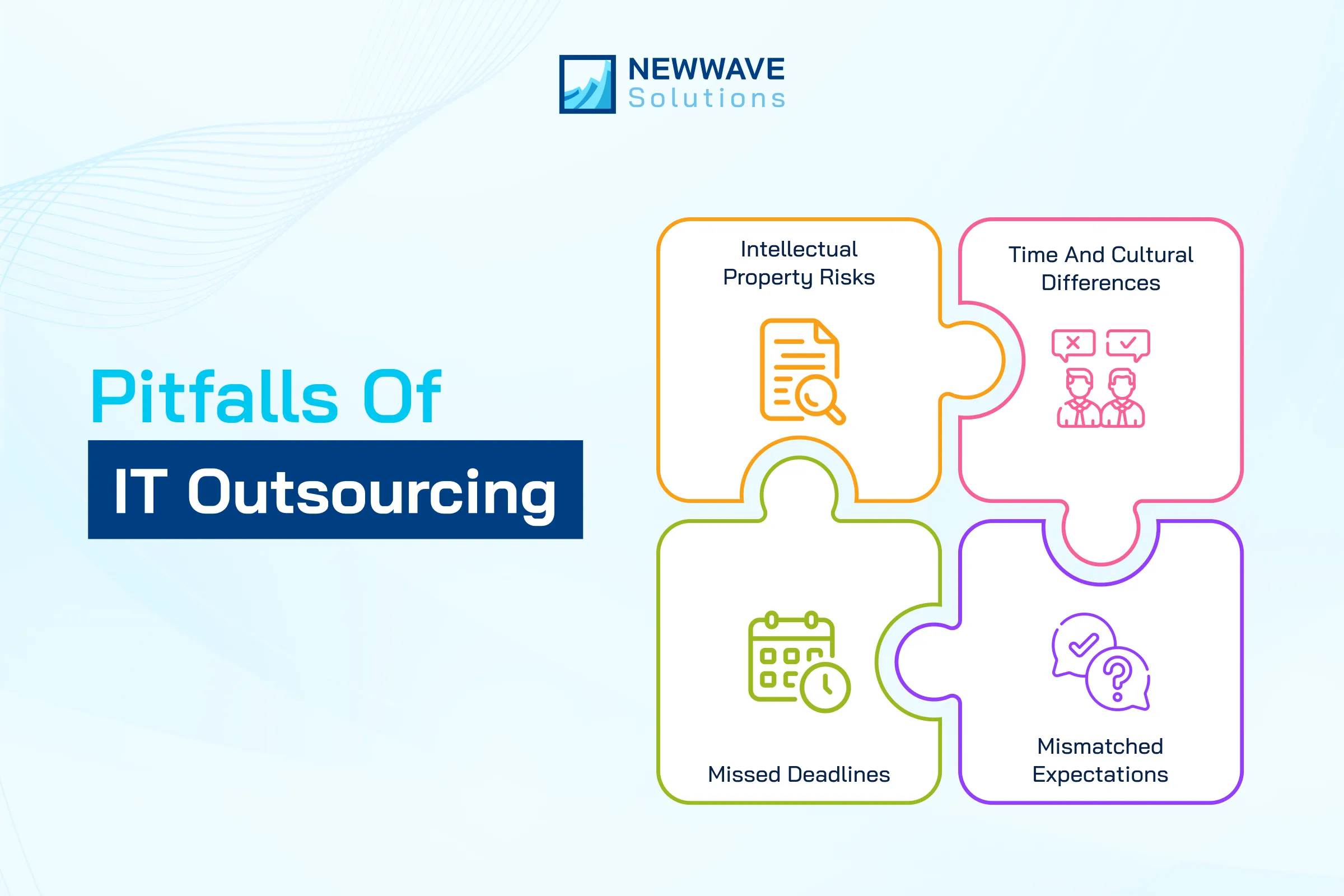
1. Less Control
Outsourcing IT services can sometimes mean giving up direct control over your IT operations. Without full oversight, issues with quality, communication, and security can arise. These challenges often result from relying on external vendors who may not fully align with your business’s internal practices or standards.
2. Communication Issues
Communication problems are one of the most frequent disadvantages of outsourcing IT services, especially when working across different time zones. Offshoring usually results in delayed feedback, making it difficult to coordinate schedules and implement current feedback. There can also be problems with cultural differences since styles of communication differ, creating misunderstandings.
3. Security Risks
One of the significant disadvantages of IT outsourcing is the increased vulnerability to security threats. Especially when confidential data is involved. Should there be laxity about cybersecurity on the part of your outsourcing partner, information may easily be compromised. These risks are higher for projects involving customer data or your intellectual property.
Before partnering with an outsourcing vendor, ensure their security practices are up to standard. Conduct thorough background checks and always implement strict internal security policies to safeguard your information.
4. Lower Quality
Not all vendors deliver the same level of quality, and some may prioritize cost savings over excellence. This is one of the pros and cons of IT outsourcing—while it can save money, the quality might not always meet expectations. Without proper oversight, ensuring that work aligns with your company’s standards can be challenging.
It is important to carefully screen any potential vendors and set quality control standards before embarking on a project to avoid disappointing results.
5. Ethical Concerns
IT outsourcing brings along a set of ethical questions, especially about labor practices. Many companies like to outsource their businesses to countries where labor is cheap, which may result in poor working conditions or exploitation of workers. In addition, outsourcing may cause job losses in the home country and thus lead to economic insecurity.
Understanding these disadvantages of outsourcing IT enables a business to balance while outsourcing and proactively undertake mitigation steps against the associated risks. While outsourcing is an extremely beneficial proposition, an understanding of the challenges involved helps to ensure that the partnership remains productive and in tune with your business objectives.
Main Types of IT Outsourcing
IT outsourcing has become a familiar concept for business enterprises. Along with understanding the pros and cons of in-house development and outsourcing, it’s important to familiarize yourself with the different types of outsourcing to select the option that best aligns with your company’s long-term business strategy. Besides, it is able to necessitate a clear understanding of how to categorize IT outsourcing services. The following are some of the most widely utilized types of IT outsourcing.
IT outsourcing has become a familiar concept for business enterprises, with 5 main types:
1. Nearshore
The act of outsourcing IT-related tasks to a company located in a neighboring country. While this arrangement simplifies travel and communication between the two organizations, the drawback is the restricted range of available options.
2. Offshore
Offshore outsourcing involves sending IT-related work to a company in a foreign country. This option usually comes with the added benefit of cost savings. However, it introduces complexities related to different time zones, cultural nuances, and potential language barriers. Despite these challenges, many organizations opt for IT outsourcing firms to capitalize on the financial advantages they offer, seeking global talent pools and diverse expertise.
3. Onshore
This type of IT outsourcing is selecting an external service provider based within the same country as the hiring company, to remotely handle the tasks. In this model, local teams are easily accessible, speak the same language, live in the same time zone, and have similar mindsets.
4. Cloud computing
Engage an external service provider to deliver IT-related services through virtualized solutions, including Infrastructure as a Service (IaaS), Platform as a Service (PaaS), and Software as a Service (SaaS).
5. Managed services
Managed services require enlisting the services of an external company to handle network management functions, including IP telephony, messaging systems, call centers, virtual private networks (VPNs), firewalls, network monitoring, reporting, and various other tasks.

>>>Read more: Types of IT Outsourcing: Onshore, Offshore, Nearshore
5 Best Practices for Outsourcing IT Services
The major benefits of IT outsourcing types are cost-effectiveness and efficiency. Still, successful outsourcing requires adherence to best practices. The following is how one can ensure a smooth and effective outsourcing experience:
1. Choose the Right Project to Outsource
The core activities that are not crucial for your business or that need expert skills: Outsourcing them allows your team to concentrate on strategic goals, while the technical work will be performed by experts.
A very good example of outsourcing tasks includes software development or maintenance services, which are types of IT outsourcing services that can be outsourced effectively.
2. Select a Reliable Vendor
Work with an IT outsourcing provider that has proven experience in your industry. Look for vendors who offer diverse types of IT outsourcing services and ensure they align with your goals. Evaluating client reviews and requesting references can help identify trustworthy partners.
3. Document Every Stage of the Project
Clear documentation helps track progress and ensures all parties are on the same page. This includes defining project timelines, milestones, and deliverables. Proper documentation also simplifies handoffs and reduces misunderstandings.
4. Maintain Open Communication
Establish regular communication channels with your outsourcing services provider. Schedule frequent updates and progress reviews to address potential issues early. Strong communication bridges time zone differences and fosters better collaboration.
5. Focus on Long-Term Value
While immediate cost reductions are beneficial, prioritize partnerships that offer long-term benefits. Consider scalability, adaptability, and how the vendor can support future growth.
By following these best practices, you can make the most of IT outsourcing types like nearshore outsourcing or project-based models. The key is careful planning and working with a reliable development team that understands your vision.
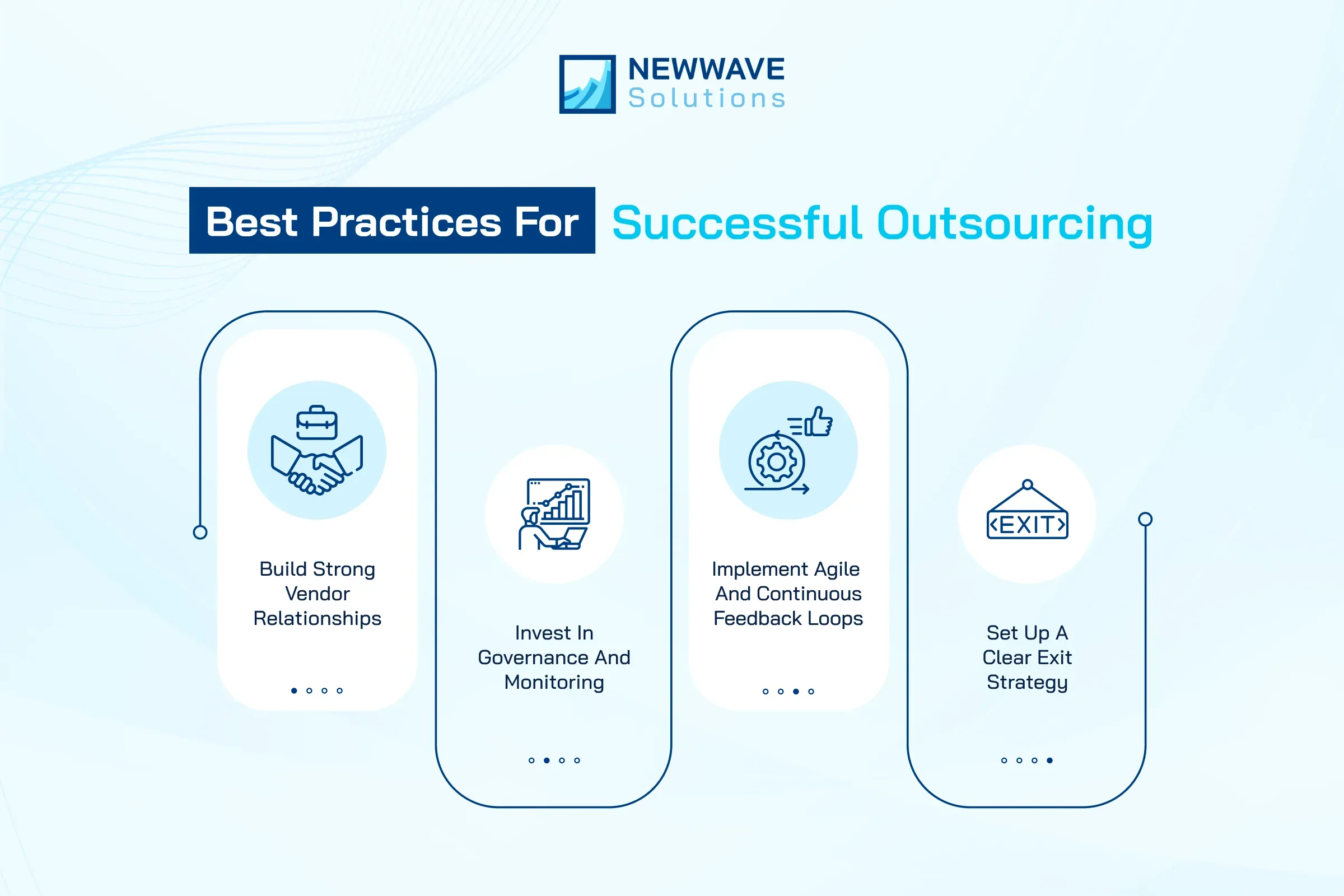
Frequently Asked Questions (FAQs)
Q: What types of businesses are best suited for IT outsourcing?
A: IT outsourcing is suitable for most businesses, especially startups, small and medium-sized enterprises, or companies looking to optimize costs and accelerate project timelines without making long-term investments in an in-house IT team.
Q: How can you choose a reliable IT outsourcing partner?
A: It’s important to select a provider with proven experience, a diverse project portfolio, positive client feedback, and clear contracts as well as transparent security policies. Don’t hesitate to ask potential partners about their technical teams, project management processes, and post-delivery support commitments.
Q: Is IT outsourcing secure in terms of data protection?
A: Data security depends on both your business and your outsourcing partner. You should sign clear contracts regarding data protection, require your partner to comply with recognized security standards (such as ISO 27001), and regularly audit, monitor, and update your information security policies.
Q: What is project-based outsourcing?
A: The project-based outsourcing model is one of the most accessible forms of outsourcing because it is used in almost every industry. The outsourcing company handles each stage of the project, forming the development team and managing the entire process. Your internal project manager will maintain constant communication with the external team. At the last, your business will receive regular progress updates, outlining the work completed and the level of your company’s involvement in the project.
Q: Why is IT outsourcing important?
A: When it comes to cost-effectiveness, IT outsourcing is the top choice. By partnering with a third-party provider, you gain immediate access to a team of highly skilled developers who help you implement the latest technologies and techniques.
Final Thought
By understanding the advantages of IT outsourcing (along with its drawbacks), your business is better equipped to evaluate whether outsourcing IT functions is the right strategic choice. To get the most benefits of IT outsourcing, the management should work with competent partners and avoid misunderstandings or a lack of agreements.
At Newwave Solutions, we offer all-in-one software development services for all companies around the world. We deliver projects with 100% energy and manage your IT functions so you can focus on the core business. Contact us today to take full advantage of IT outsourcing for your business.
Contact Information:
- Head Office (Hanoi): 1F, 4F, 10F, Mitec Building, Cau Giay Ward, Hanoi City, Vietnam
- Branch Office (Tokyo): 1chōme118 Yushima, Bunkyo City, Tokyo 1130034, Japan
- Hotline: +84 985310203
- Website: https://newwavesolution.com
- Email: [email protected]
To Quang Duy is the CEO of Newwave Solutions, a leading Vietnamese software company. He is recognized as a standout technology consultant. Connect with him on LinkedIn and Twitter.

Read More Guides
Get stories in your inbox twice a month.
Let’s Connect
Let us know what you need, and out professionals will collaborate with you to find a solution that enables growth.
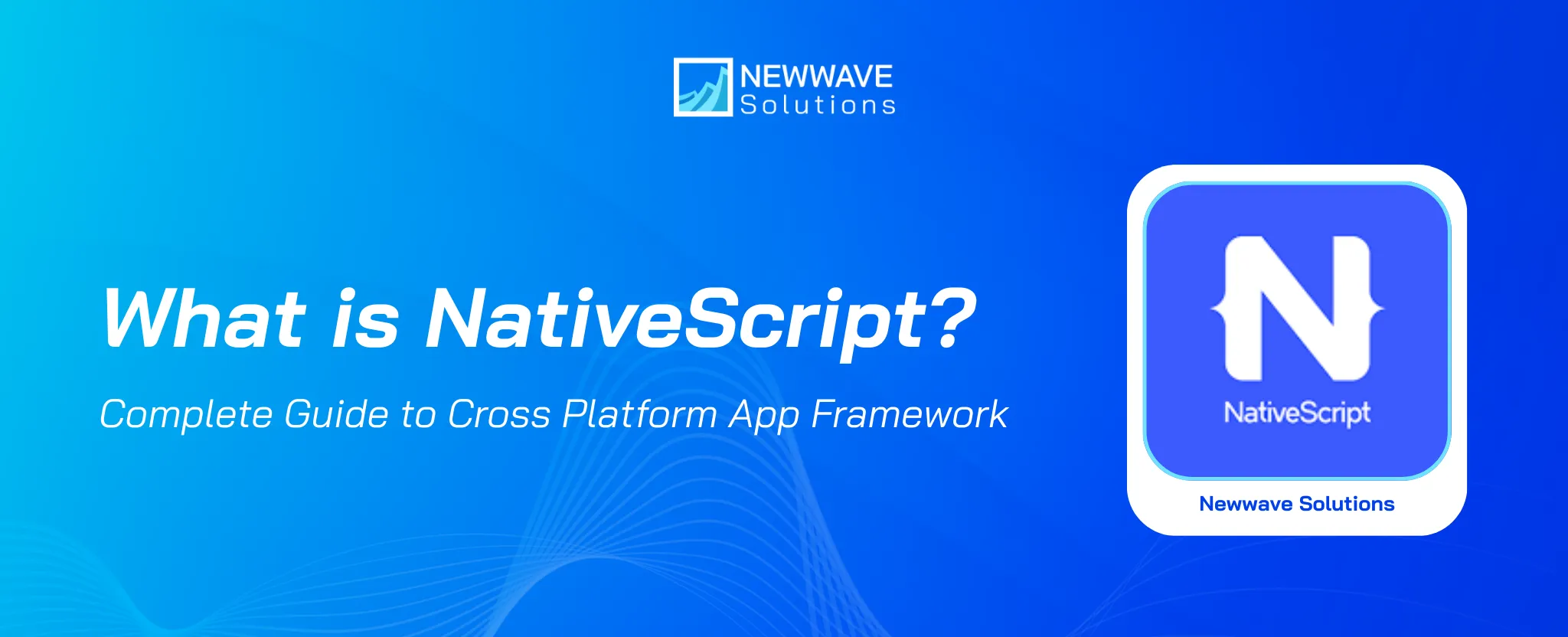



Leave a Reply